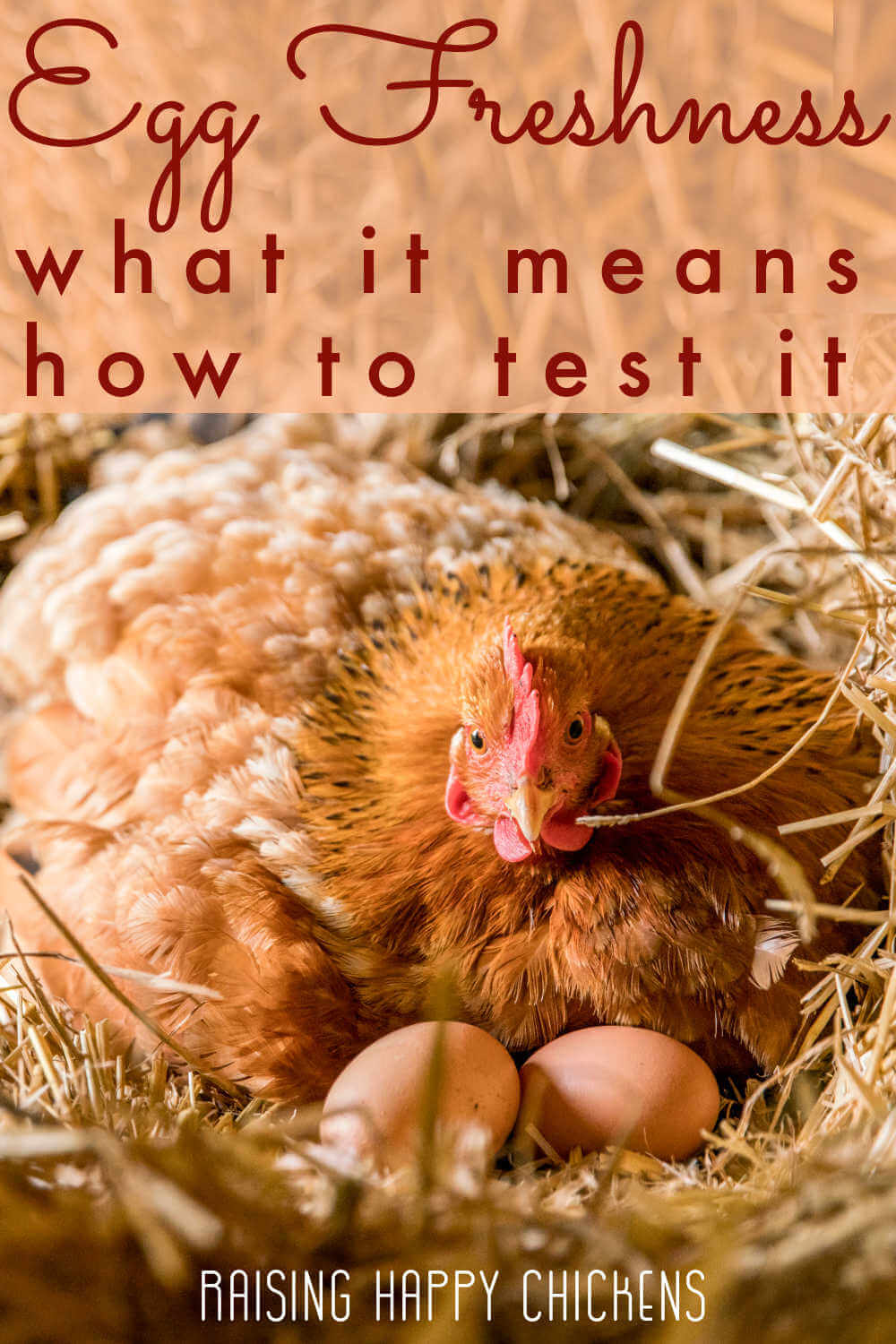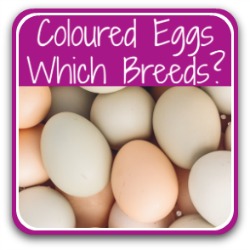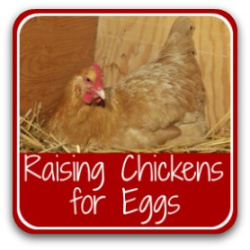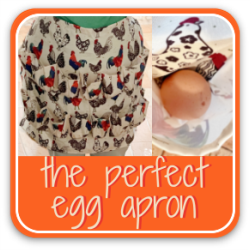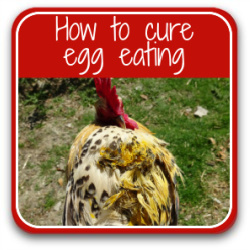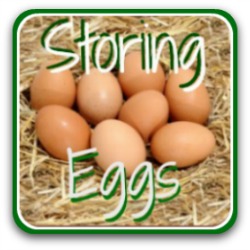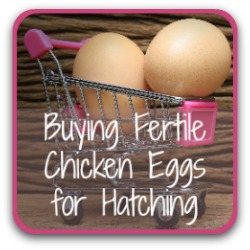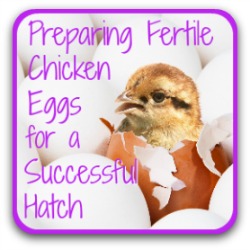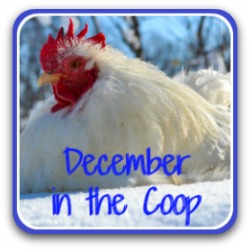- Home
- Egg Nutrition
- Freshness
Egg freshness: what it means and how to check it.
You know that eggs laid by your own chickens are as fresh as you can get - or at least they should be.
Making sure you collect them every day and persuading your girls to lay in their nest box rather than the compost heap will make sure your eggs are clean and as fresh as it's possible to be.
But what happens if the time comes when you have to – oh no! – buy from a shop? What differences can you expect to see? And how do you calculate freshness?
In this article, we'll look at...
* how to test freshness in a whole egg
* how to test when cooking
* storing eggs for ultimate freshness
* avoiding Salmonella in eggs.

Checking for freshness when the egg is still in the shell.
1. Egg freshness test using your senses!
Before anything else, try two common sense methods.(1, 2)
Firstly, feel the egg shell. Does it have any cracks – even hairline cracks? If so, discard it. Bacteria can enter the egg through the tiniest of cracks.
Eggshells which crack during cooking – for example when boiled – are fine.
Equally, if the egg shell feels 'slimy', or has a powdery substance (likely to be mould) on the surface, discard it.
Secondly, use your nose to tell! Eggs which have gone bad give off a very pungent odour which can be smelled even before it's broken.
2. Use the egg float freshness test.
Testing the egg for freshness by floating it is a common, simple and reliable process(2).
Fill a container with water and gently float the egg into it. A very fresh egg will sink to the bottom and lie perfectly straight.
An egg that's about a week old will tilt slightly at one end. The older it is, the more it will tilt.
If it floats, it shouldn't be used – it's stale.
This works because as an egg ages it loses water and replaces it with air. So the air pocket at the blunt end of the egg becomes larger with age and so floats when in water.
This is a store-bought egg, tested on the day I bought it from a well-known supermarket. You can see even now how it tilts upwards.
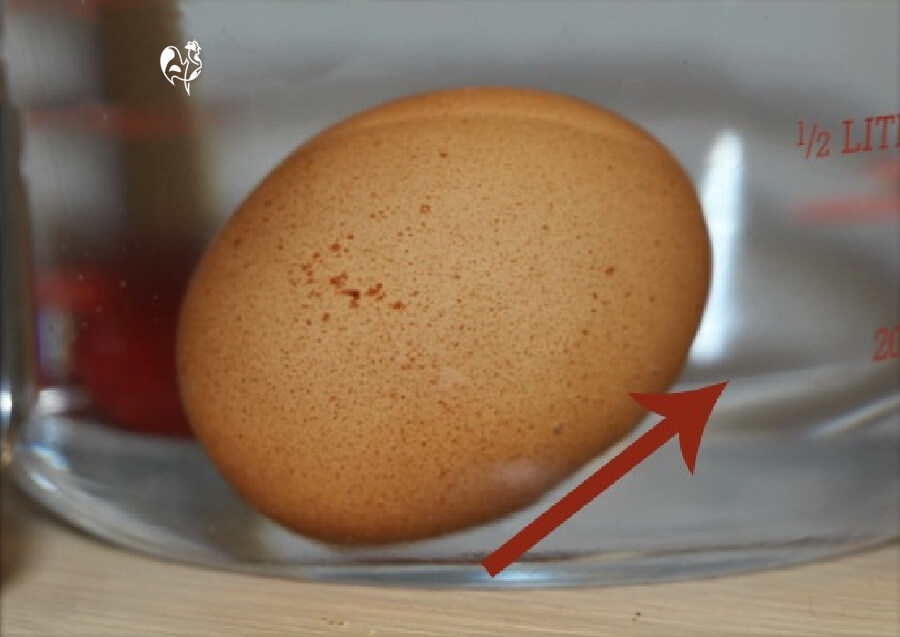
Although this was sold as 'fresh', I would estimate it's between two and three weeks old. Which is why it's better to have your own, really fresh, backyard eggs.
Does the float test indicate a bad egg?
Not unless it floats. An egg which tilts means it's not as fresh as our own backyard chicken eggs, but it's not necessarily bad. If you're not sure, crack it onto a plate and – unless it smells bad – take a look.
Can the float test check for freshness in a fertile egg?
If you have fertile eggs destined for the incubator, checking freshness in water is risky.
If there is the slightest crack, water will enter the egg and it will be rendered useless for hatching.
Buy from a reputable breeder who will only offer fresh eggs, and before putting the eggs into the incubator, use candling as a safer option.

How to check egg freshness when cooking.
A fresh egg from a chicken who's able to scratch around a back yard will have a lovely, dark yellow or orange coloured yolk which stands up from the white in a dome shape.
The white immediately next to the yolk is thick and 'gloopy' and you'll be able to see another, thinner layer of white just outside it.
Here's an example from one of my pastured chickens. See how the white is thick and stands proud near the yolk, thinning out quite close to the thicker part?
This is the sign of a newly laid fresh egg.
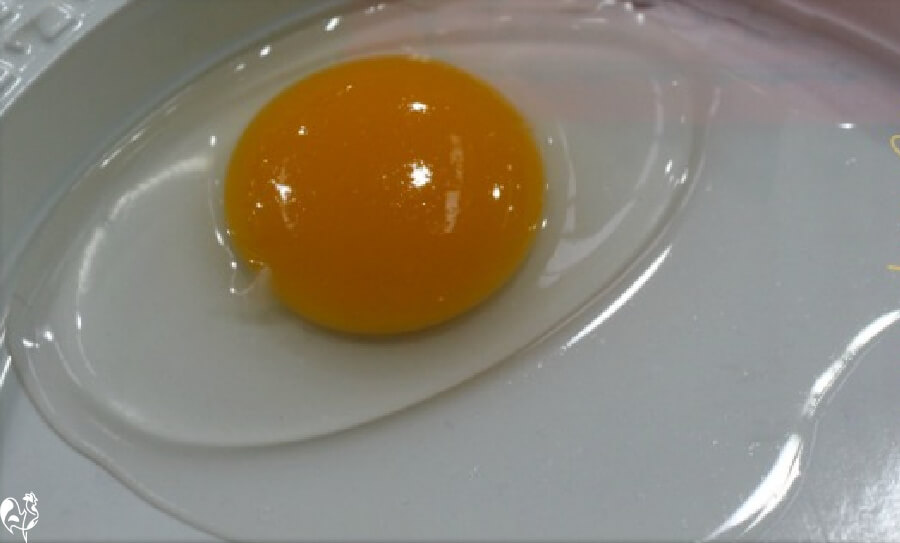
- In a not-so-fresh egg – let's say over a week old – the yolk will look much flatter. The photo below is an example.
- If you buy from a commercially reared chicken who has been restricted to a cage or barn and unable to forage on pasture, you'll also notice the yolk is a much lighter yellow colour.
- The white is much more 'cloudy' and spreads out thinly across the plate.
- So even though this egg was sold as fresh and "free range", you can immediately see the huge difference from my own pastured chicken egg.
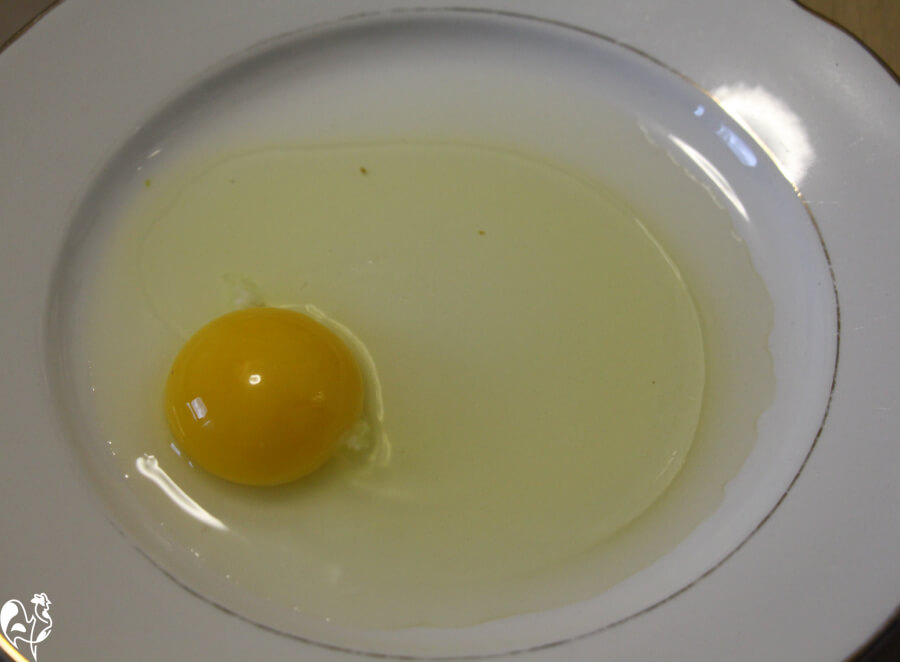 The yolk and white of a store-bought egg sold as "fresh, free range".
The yolk and white of a store-bought egg sold as "fresh, free range".The bought egg yolk broke instantly. It's a much less strong consistency than our own chickens' yolks because its freshness degrades over time.
If you fry an older egg, you'll get a very flat, pancake-type shape and the yolk is likely to go hard quite quickly.
Your girls' freshly laid eggs may take a little longer to cook, but there's no comparison in terms of freshness. They're much healthier, the yolk will stay runny and they will taste so much better.

Is Salmonella caused by eggs which have lost their freshness?
No. Salmonella is a bacteria which can infect eggs internally or externally.
- Internally, the bacteria is carried by the chicken and transmitted to the egg as it forms in the ovaries.
- Externally, it is transmitted through egg shell, mainly by contaminated faeces.
Salmonella Enteritidis, to give it its scientific name, can be carried by any chicken but is most commonly found in hens from large, commercial flocks who live in cramped and often insanitary conditions.
The illness it transmits is called Salmonellosis. It can cause problems in people who have under-developed immune systems: the elderly, the very young, unborn babies or people being treated for conditions which mean their immune system is already compromised.
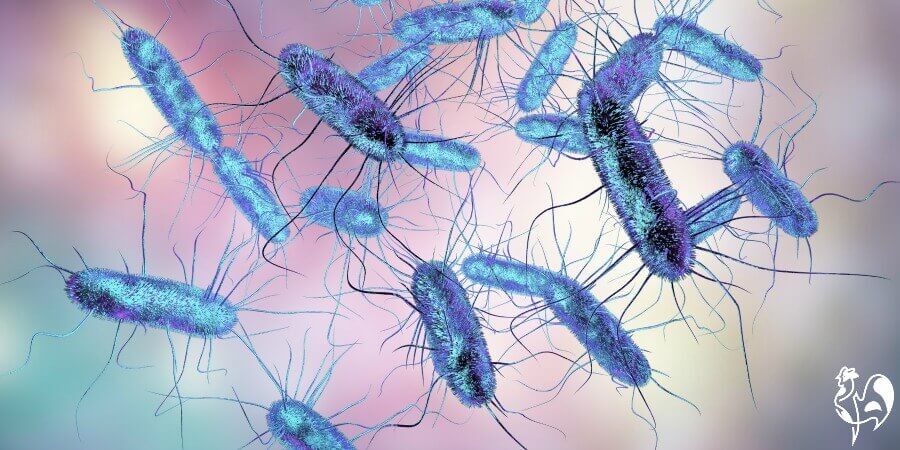
Since the large Salmonella outbreak of the 1990s, commercial flocks
are vaccinated against it. The United States Department of
Agriculture (USDA) estimate that in current flocks, a maximum of about
one in ten thousand chickens may carry the bacteria.
Find more details about salmonella in my related article.

Will my backyard chickens have Salmonella?
Highly unlikely, as long as you follow common sense biosecurity measures.
Even in flocks where the incidence of Salmonella is over 50% and where
the eggs are stored for long periods of time at room temperature, the
chances of contracting Salmonella from an egg is estimated at 0.00045% – that's about 1 in
20,000 eggs.
It can be carried by rats though, so if you have any problems with rodent infestation you need to control it straight away. Have a look at this page for ten ways of getting rid of rats.
If you fall into one of the 'at risk' groups, make sure you cook your eggs well and avoid eating them raw in products like mayonnaise or egg nog.
Maintain simple hygiene routines in the coop and nest box, keep your eggs fresh, and all will be well.
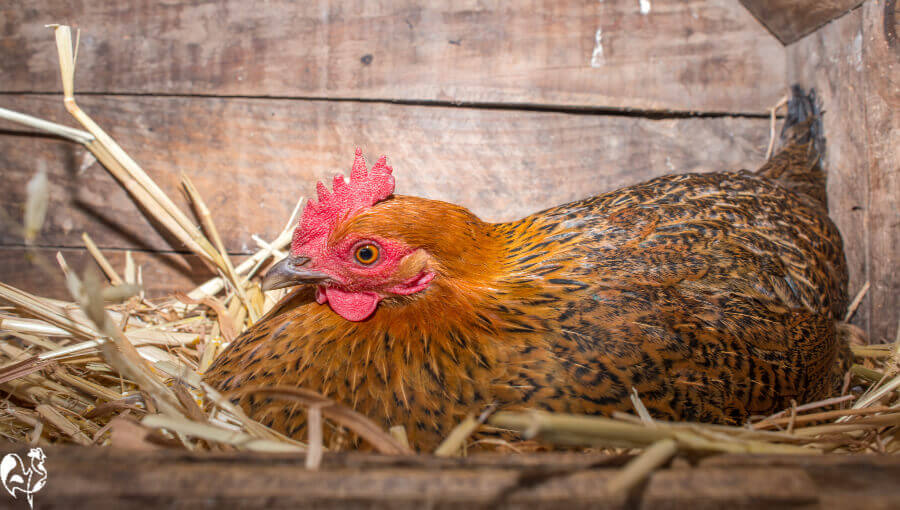

Where would you like to go now?
Here are some of my most popular egg related articles which you may find helpful. Click on any of those pics to go to the page.

Sources.
A lot of "facts" you'll find on the internet are often people's individual views, based on inaccurate information repeated from poor quality sources.
The information I provide in this article and others is based not just on my own experience, but on evidenced facts from scientific, peer-reviewed research and books from highly respected and experienced poultry keepers such as Gail Damerow.
Some of the trusted sources I have used in this article are these.
1. USDA: Shell eggs from farm to table. Pub. Food Safety and Inspection Service, 2019.
2. Kubala, J: How to Tell if Eggs Are Bad. Pub. Medical News Today, 2021, updated 2023.
3. Strawna, L. K., et al: Risk Factors Associated with Salmonella and Listeria monocytogenes. Pub. Journal of Applied Environmental Microbiology, 2013.
4. Anderson et al: Risk Assessments of Salmonella in Eggs and Broiler Chickens. Pub. World Health Organisation, 2002, updated 2021.
- Home
- Egg Nutrition
- Freshness
